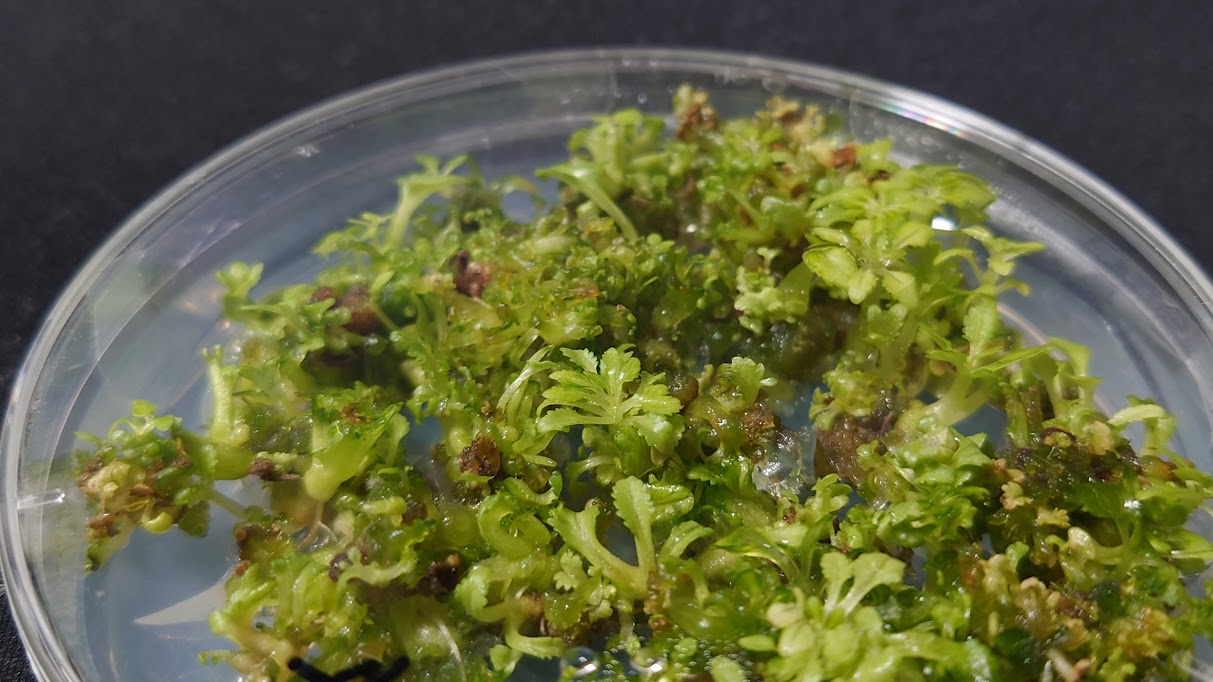Plant Transformation Mechanism (Agrobacterium Method)
here are various methods for genetically modifying plant cells, but the most commonly used are the Agrobacterium method and the bombardment method. This time, I would like to talk mainly about the Agrobacterium method.
Agrobacterium tumefaciens, a soil bacterium, is originally a pathogen that induces tumors (galls) in trees. The mechanism of gall formation is that when Agrobacterium infects a plant, it incorporates the “T-DNA region” from the plasmid it carries into the plant DNA. The T-DNA region codes for genes that induce plant hormones, causing plant cells to proliferate excessively and form tumorous tissues.
In the Agrobacterium method of plant transformation, the harmful genes in this T-DNA region are removed, and a plasmid carrying the desired gene is introduced into Agrobacterium, which then infects the plant to introduce the gene. While this sounds like a simple reaction, in reality, detailed condition testing is required depending on the plant species, the gene to be introduced, and the Agrobacterium strain. Among these, the addition of “acetosyringone” to the Agrobacterium culture medium is very important. It is necessary to bring the Agrobacterium that will infect the plant into a “standby state” for gene introduction, and this is possible by adding the phenolic compound “acetosyringone.”
The redox state of acetosyringone changed gene expression in E. coli.
Acetosyringone, essential for the Agrobacterium method, also affects various microorganisms in nature. In nature, acetosyringone is released from plant roots. In tests with E. coli, the addition of “oxidized acetosyringone” affected the expression of oxidative genes in E. coli and altered its growth.
Redox active plant phenolic, acetosyringone, for electrogenetic signaling
The paper linked above showed that when electric current is passed through a solution of acetosyringone, and the oxidized acetosyringone is added to E. coli, the growth of E. coli is suppressed. Further analysis revealed that the addition of oxidized acetosyringone changed the expression of redox genes in E. coli. This alters the amount of reactive oxygen species synthesized within E. coli. Reactive oxygen species are signaling molecules in various organisms and control a wide range of physiological activities. The results suggest that genes triggered by reactive oxygen species can be controlled by adding “oxidized-reduced acetosyringone.”
Could the redox switch in Agrobacterium affect gene insertion?
In some plant transformation protocols, a “reducing agent” (such as mercaptoethanol) is added to the Agrobacterium culture medium used for transformation in addition to acetosyringone. I thought it was added to reduce damage to the plant tissue being infected, but the paper suggests it may also affect Agrobacterium. The addition of the reducing agent, together with acetosyringone, could control Agrobacterium’s gene expression and alter the efficiency of gene introduction into the plant.
The possibility of improvement or enhancement exists whether or not a reducing agent is added, so it might be worth testing, especially in plants where the addition of a reducing agent is not recommended.



コメント